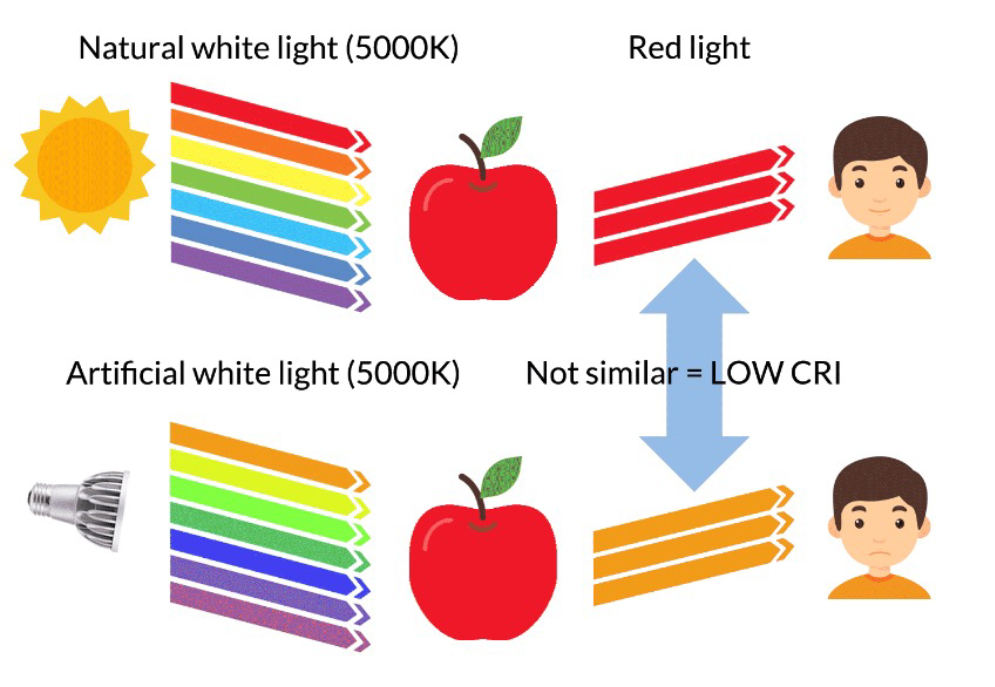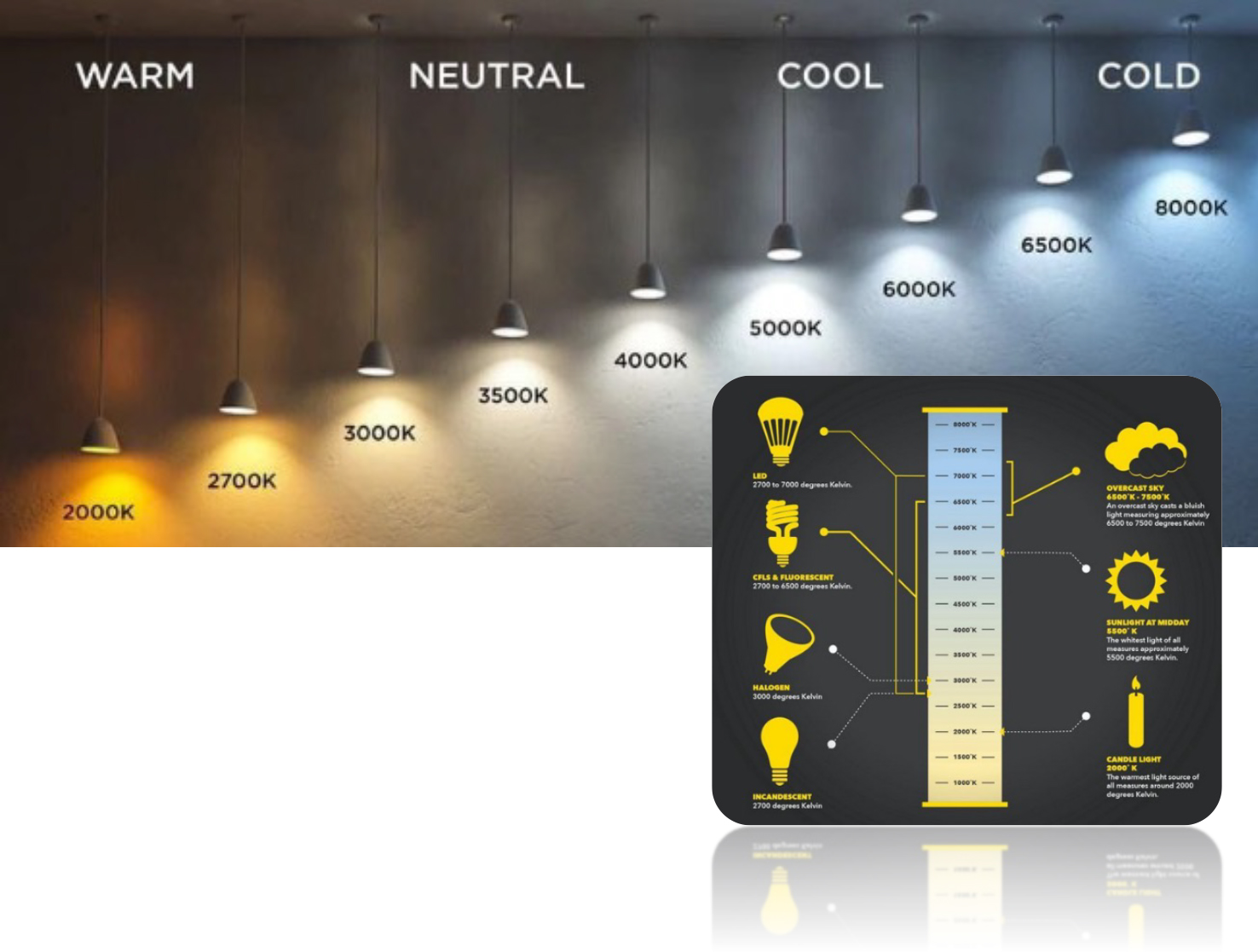Blog
The Difference Between CRI vs CCT
When it comes to selecting high quality lighting, we hear a lot about CRI and CCT. What are these and what is the difference between these two?
CRI stands for Color Rendering Index, on the other hand, CCT stands for Correlated Color Temperature (known simply as color temperature for many lights). Let’s talk about these two measures one at a time so we can better understand how they describe the quality of lights and how they can help us to select high quality lighting.
CRI and CCT are two different ways of measuring and specifying the color of light. CRI is a measure of how accurately a light source renders the colors of objects compared to a natural light source (the Sun). It is expressed as a number on a scale from 0 to 100, with higher numbers indicating better color rendering. CRI of 100 means that the light source renders colors perfectly, while a CRI of 80 or lower may result in colors appearing distorted or unnatural. CCT, on the other hand, is a measure of the hue of a light source, with higher color temperatures corresponding to a bluer or cooler hue, and lower color temperatures corresponding to a redder or warmer hue. Color temperature is typically measured in degrees Kelvin (K) ranges between 1000K to 12000K.
Color Rendering Index (CRI)
CRI is a measurement of a light’s ability to reveal the actual color of objects as compared to an ideal light source (natural light). High CRI is generally a desirable characteristic (although of course, it depends on the required application). If our goal is to illuminate a scene such that the colors all reveal as they would naturally, then we want a high CRI light bulb. If, conversely, we’re lighting an underground tunnel and we don’t particularly care whether the shapes are black and white or in color, CRI might not be as important. We tend to think, however, that high quality color rendering is a benefit in almost every situation.

The value for CRI that is typically advertised on commercially available lighting products is known as the CIE Ra value (a standard set by the International Commission of Illumination based in Vienna, Austria). Another standard for determining the color rendering ability of a particular bulb is the Color Appearance Model (CAM).
The CRI is determined by comparing the colors of eight standard test colors (15 colors for the extended CRI) when illuminated by the light source being tested to their colors when illuminated by the reference light source, generally a natural light, the Sun. CRI is measured on a scale where a higher number represents higher ability, with 100 being the highest.
When a red color is illuminated by the reference light source (the Sun). The red color will look 100% accurate = 100 CRI. When a red color is illuminated by a cheap LED lamp (low CRI). The red color will look different or even orange. The better the LEDs are, the closer they are to the reference light source. Our Sun.

Color Temperature (CCT)
Color temperature is a method to describe the characteristics of visible light from different emitters. The color temperature scale works by comparing the visible light emissions from a given light bulb to those of a “blackbody” emitter (an object whose surface temperature is the same as its color temperature value).
ConclusionsTo summarize the main differences between CRI and CCT:
CRI is more important when accurate color rendering is more important, such as with crafts, art, painting miniatures, fashion design, architectural drawings in museums or high-end commercial retail stores. Also, it is important for professionals such as designers, architects, fashion designers and many more.
CCT (Color Temperature), on the other hand, is more important for applications where the mood or atmosphere of a space is important, such as in restaurants or residential settings both for outdoor and indoor settings.
